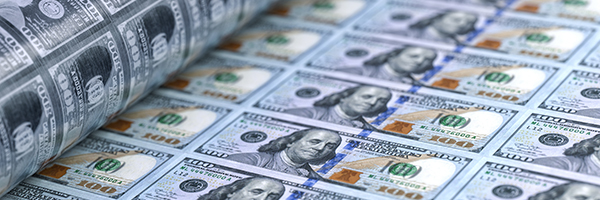Look for an opportunity to buy Treasuries at a short-term peak in yields.
With a debt filing extension in effect and default off the table, the U.S. Treasury can now turn to the task of rebuilding its cash buffer. That means selling lots of Treasury bills, notes, and bonds. How many? Well, at least $500 billion with. And some Wall Street estimates put the selling spree at $1 trillion by the end of the third quarter of 2023. The selling begins with the auction of $170 billion in Treasury bills on Monday, June 5.
I expect two consequences.
First, selling that much into even the extremely liquid Treasury market will require convincing potential buyers to buy. And everyone knows how you convince buyers to buy more Treasuries–you offer higher yields (which means lower prices.) I’m going to be watching Monday’s auctions carefully to see what yields are on offer and what bids from Treasury dealers look like. Do remember, though, that this sale of $170 billion is just the first stage of somewhere between $500 billion and $1 trillion in sales. It’s hard for me to imagine that yields in later sales won’t be higher.
Second, when the public buys a Treasury it’s equivalent to taking that much money out of the money supply (especially if some of the cash from this sale isn’t going to be immediately spent. Some will sit in the Treaury’s accounts for future use.) For example, some of the money to buy Treasuries will come out of savings and money market accounts.
Which means that rebuilding Treausy’s cash buffer is equivalent to the Federal Reserve tightening the money supply or raising interest rates.
How big a tightening isn’t certain but we know from the effects of past crises that it will be substantial. JPMorgan, for example, estimates that one broad measure of liquidity will fall $1.1 trillion from about $25 trillion at the start of 2023.
The exact answer depends on who is doing the buying. Big banks could sit out the auction for short-term bills because even these elevated yields aren’t that attractive compared to what they get paid by the Fed on their own reserves.
Banks, especially regional banks, could take a hit, though, if depositors move money into Treasuries from deposits, money markets, and CDs. Will banks have to raise the interest rates they pay to keep these deposits?
What you should do:
Watch for stocks to grind lower due to a tighter money supply. The tightening, however, isn’t likely to result in some kind of volatility event.
And watch for an opportunity to buy Treasuries at what is likely to be a peak in yields for this cycle. Looking out past six months, it’s likely that yields will be lower because either the Federal Reserve has moved to cut interest rates because the U.S. economy has slowed. Lower interest rates would mean higher bond prices so buying at a near-term peak in yields would give you both a high yield and price appreciation.
I’d look most closely at the 2-year Treasury–because the 2-year note is especially responsive to changes in Fed policy and economic trends. The yield on the 2-year note was at 4.50% on Friday. That’s already an attractive level in my mind but I wouldn’t mind getting another 20 basis points or so in yield. The yield is up 71 basis points in the last month. I’d also take a look at the 12-month Treasury with a yield on Friday of 5.23%, up 60 basis points in the last month.


